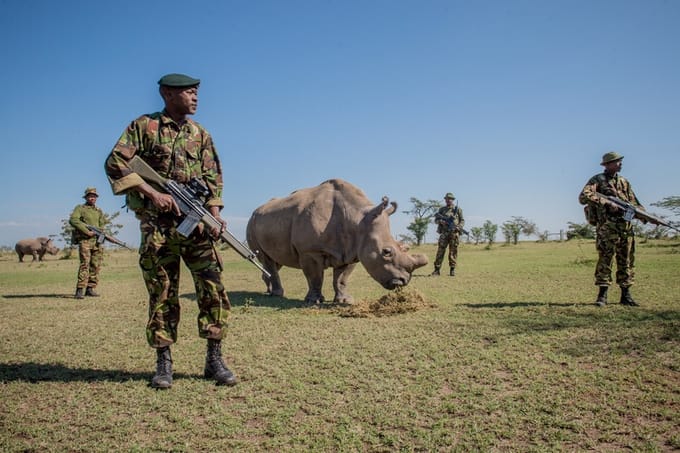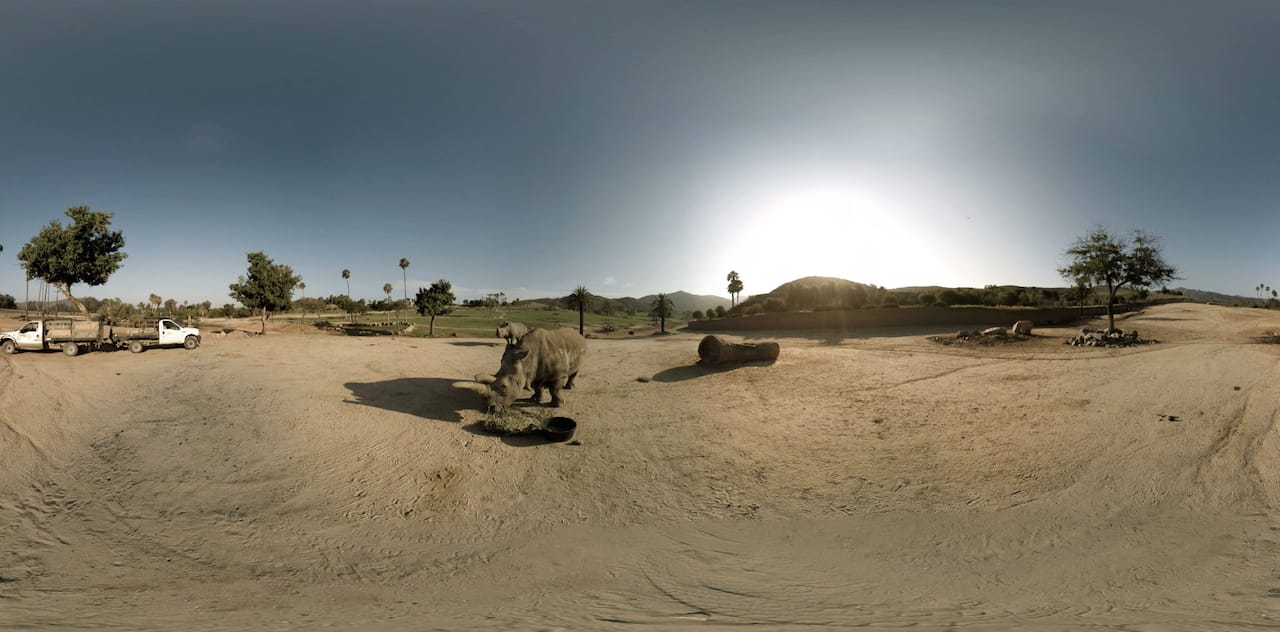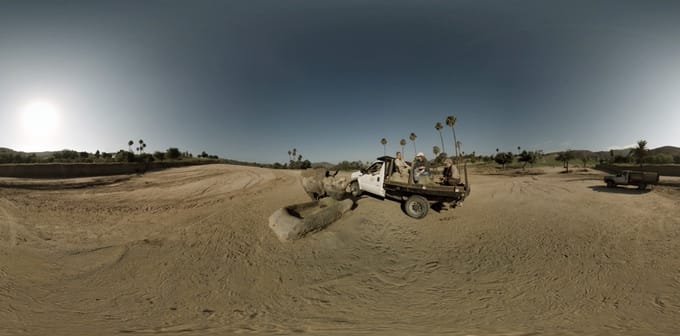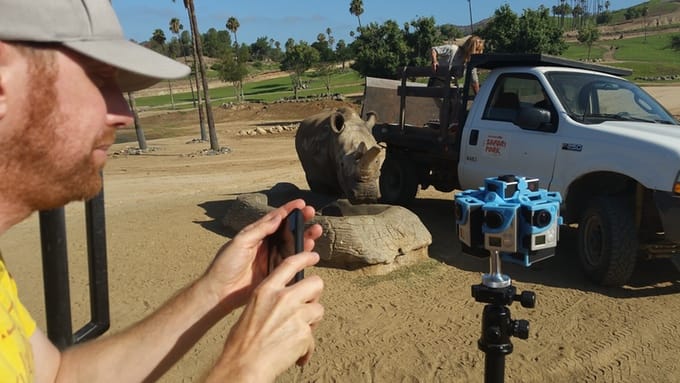Before They Disappear: A Virtual Reality Requiem for the Last Four White Rhinos
When filmmakers Eline Jongsma and Kel O'Neill began researching the Northern white rhinoceros over a year ago, there were seven on the whole planet. Now there are only four.

When filmmakers Eline Jongsma and Kel O’Neill began researching the Northern white rhinoceros over a year ago, there were seven on the whole planet. Now there are only four. To connect viewers to a species that is arguably our most endangered animal, they are using virtual reality (VR) for their immersive film The Ark.
This week, they launched a campaign on Kickstarter to support their last leg: a journey to Kenya, where three white rhinos live at the Ol Pejeta Conservancy. There they are protected by 24-hour armed guards from poaching, one of the main reasons for their endangered status. Initially, the filmmakers were interested in the Frozen Zoo, an initiative at the San Diego Zoo to preserve skin samples from animals — including the white rhino — with the potential for the future development of stem cells, and possibly in-vitro fertilization. (Only one white rhino male remains, a 42-year-old named Sudan.) The San Diego Zoo also hosts white rhino Nola, who along with three in Kenya were once all at the Dvůr Králové Zoo in the Czech Republic. The most recent loss was this July, when Nabire, a 31-year-old female rhino, died at the Czech zoo.

O’Neill explained that part of the reason he and partner Jongsma were interested in VR for The Ark was to convey the intangible experience of standing beside an animal that will soon disappear. “There’s this lonesome, palatable feeling of tragedy around a species that is that endangered,” O’Neill told Hyperallergic. He added that VR also has the advantage of being “frameless.”
“If you look at some of the photographers who have documented the rangers squad in Kenya, you’re looking at some of the greatest photographers in the world,” he said. “Their strength comes from their ability to frame a subject, and VR is a very different approach. It’s similar to immersive theater. You have the capacity to give people the ability to create their own frames. It’s powerful.”


A preview of their 360-degree footage from the San Diego Zoo is online at VRideo. The filmmakers recently received a Tim Hetherington Visionary Award, an honor named for the late photojournalist Tim Hetherington killed in a 2011 mortar attack in Libya, which supported their shoot in San Diego and partly helped the preparations for Kenya.
Their previous documentary projects have often involved nontraditional platforms to tell global stories, such as the interactive Empire on colonialism. Multiple narratives are also a part of The Ark, with its interplay of locations, including the simulation of Africa at the San Diego Zoo, and the conservancy at Kenya, both with rhinos transported from the Czech Republic. The locations are essentially settings for the stories of people devoting their lives to the remaining rhinos, with the scientists and keepers at the San Diego Zoo, and the bodyguards in Kenya.
“You have conservation by petri dish and microscope, and you have conservation by gun,” O’Neill said. “I think we’ll be surprised once we put these stories side-by-side in the ways in which they overlap and the ways in which they talk to each other. We’re trying to get a conversation going between distinct regions in the world that people think have nothing in common with each other.” Nothing, that is, except these sole survivors of this subspecies.


The Ark: A VR film about the world’s most endangered animal is funding on Kickstarter through October 8.





